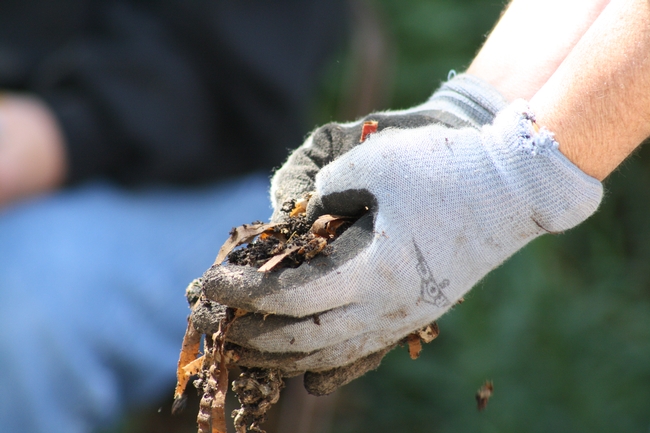
“Adding compost to your soil on a regular basis increases the amount of water your soil can hold, therefore decreasing the amount of times you need to apply water to your landscape,” says Missy Gable, the director of the UC Master Gardener program, in the final installment of a six-part video series on water conservation in the home landscape.
Compost is organic matter – grass clippings, fallen leaves, spent bedding plants, vegetable peels, coffee grounds, etc. – that has been dampened and turned regularly so it is broken down by worms and micro-organisms. The finished compost, a dark black blend with a pleasant earthy smell, can be mixed into the native soil in the landscape.
Compost improves the soil texture, holds moisture, provides food for beneficial bacteria, and nutrients for plants.
View the video below:
Detailed information about the benefits of compost and instructions for home composting can be found in Composting is Good for Your Garden and the Environment, a UC ANR publication available for free download from the UC ANR publications catalog.
Additional videos in the UC ANR series on saving water in the landscape.
Early-morning watering is best
Remove weeds from your landscape
The videos are also available on the UC ANR YouTube channel.
An initiative to improve California water quality, quantity and security is part of the UC Division of Agriculture and Natural Resources Strategic Vision 2025.